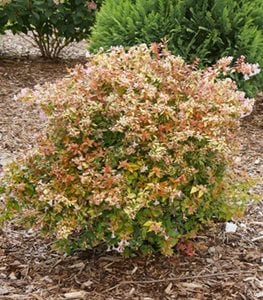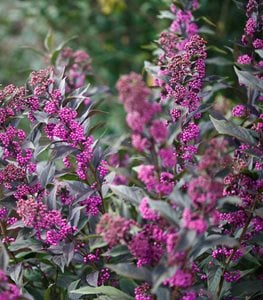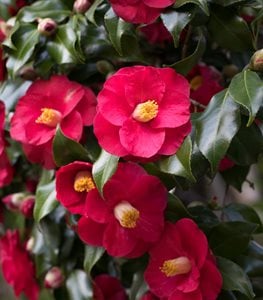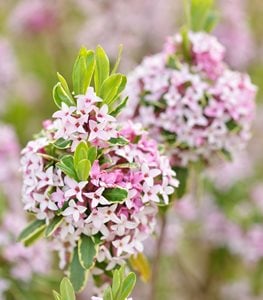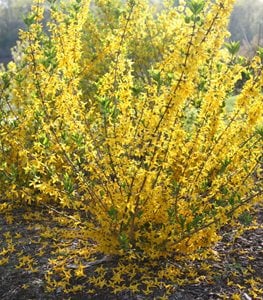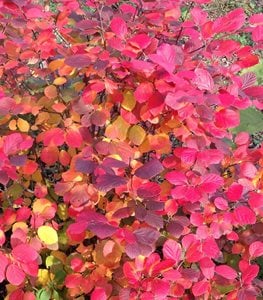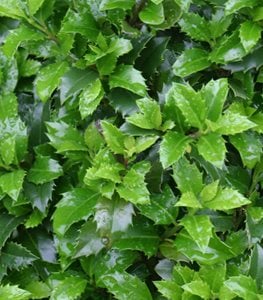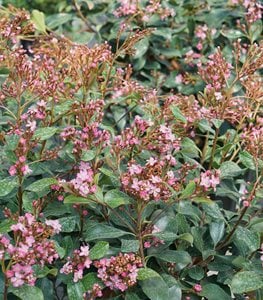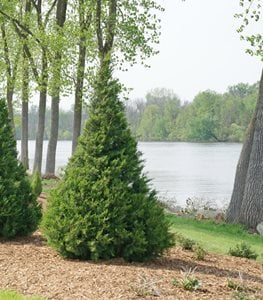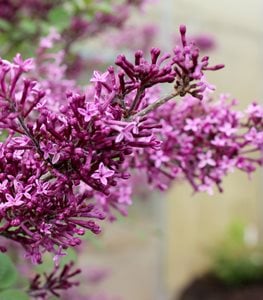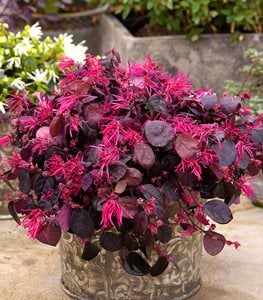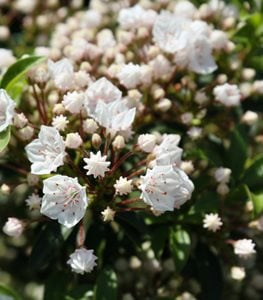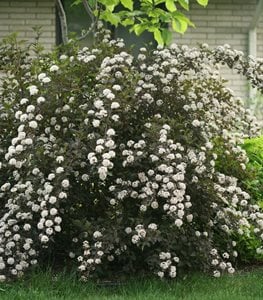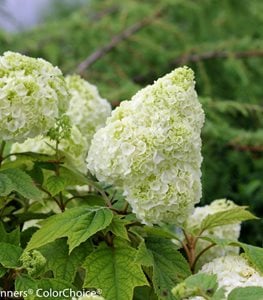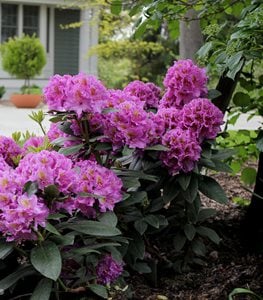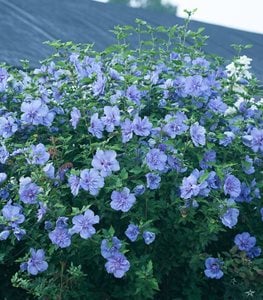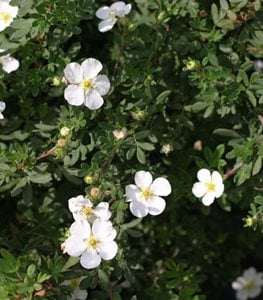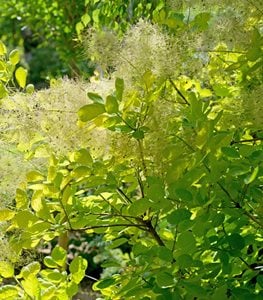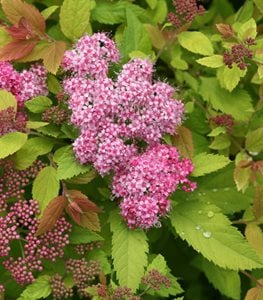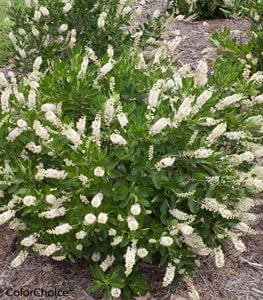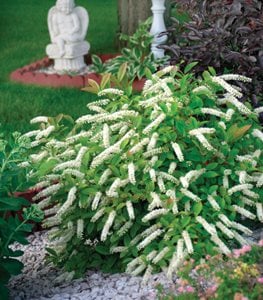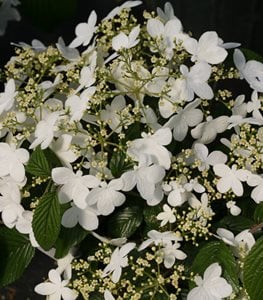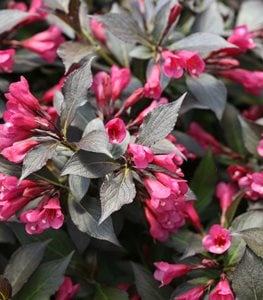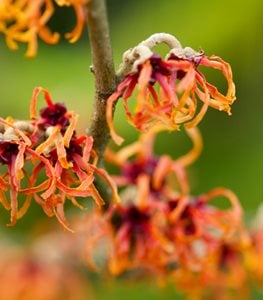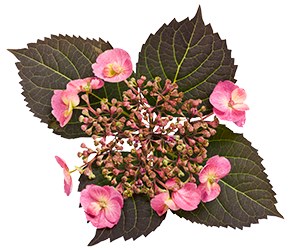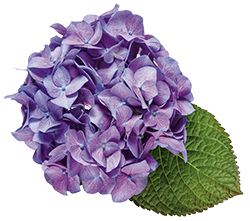25 Low-Maintenance Shrubs for Your Garden
Grow these carefree shrubs for years of interest in the landscapeGardening doesn’t have to be an endless, time-consuming chore. By including more low-maintenance plants in your landscape, you can reduce the amount of time you spend on yard upkeep.
Many deciduous or evergreen shrubs are virtually carefree once established, providing long-lasting structure, color, and texture in the landscape. These bushes can be used in foundation plantings, mixed borders, mass plantings, as screening or hedging, or as a captivating focal point. Here are some of the best low-maintenance shrubs to grow.
LOW-MAINTENANCE SHRUBS
ABELIA (Abelia spp.)
Zones: 4-11, depending on the variety
Exposure: Full sun to partial shade; coloring and bloom are best in full sun
Habit: Upright arching habit
Height/Spread: 2 to 10 feet tall, 2 to 8 feet wide
Bloom time: Spring to fall
This honeysuckle relative produces clusters of fragrant tubular flowers for months, occurring in colors of white, yellow, or pink. The glossy evergreen or deciduous leaves come in shades of green, yellow, orange, or burgundy, with fall color and exfoliating bark for multi-seasonal appeal. Abelia varieties come in different sizes that are versatile as hedging or screening, in foundation plantings, or massed in the landscape. Learn more about growing abelia.
Pictured: Funshine® abelia from Proven Winners.
BEAUTYBERRY (Callicarpa spp.)
Zones: 5-10, depending on the variety
Exposure: Full sun to partial shade
Habit: Mounding or arching habit
Height/Spread: 3 to 6 feet tall and wide
Bloom time: Late spring to mid summer
Callicarpa is a deciduous shrub grown for the prolific clusters of showy purple or white ornamental berries that occur in fall. Serrated green or chartreuse foliage develops brilliant hues of yellow, orange and burgundy in autumn. Use beautyberry as screening, in mixed borders, or as a showy focal point. Learn more about growing beautyberry.
Pictured: Pearl Glam® beautyberry from Proven Winners.
BOXWOOD (Buxus spp.)
Zones: 5-9, with a few varieties hardy to USDA zone 4
Exposure: Full sun to shade
Habit: Upright, mounding or bushy habit
Height/Spread: 1 to 20 feet tall, 2 to 8 feet wide
Bloom time: Insignificant flowers bloom in spring
Buxus is an evergreen shrub with small leaves and a dense, bushy habit that is commonly used in formal landscapes to create structure and order. Plants are especially amenable to pruning, making them suitable for hedging and topiaries. Use this versatile shrub in containers, along a pathway, or to divide garden rooms. Learn more about growing boxwood.
Pictured: Sprinter® boxwood from Proven Winners.
CAMELLIA (Camellia spp.)
Zones: 7-10, with a few newer varieties hardy to USDA zone 6
Exposure: Partial shade to full shade
Habit: Upright bushy habit
Height/Spread: 6 to 12 feet tall and wide
Bloom time: Fall to mid spring, depending on the variety
These low-maintenance evergreen shrubs produce large showy blooms that brighten up the landscape at a time of year when little else is in bloom. The elegant flowers come in shades of red, pink and white, with single, semi-double or double forms. Use this long-lived shrub in foundation plantings, as hedging, or a focal point in the landscape. Learn more about growing camellia shrubs.
DAPHNE (Daphne spp.)
Zones: 4-9, depending on the variety
Exposure: Partial shade
Habit: Bushy spreading habit
Height/Spread: 1 to 5 feet tall, 2 to 6 feet wide, depending on the variety
Bloom time: Late winter to fall, depending on the variety
Daphne is a broadleaf evergreen shrub with green or variegated foliage and clusters of tubular flowers in colors of white or pink. The blooms provide intense fragrance to woodland gardens, foundation plantings, and mixed borders. Daphne requires well-drained soil.
FORSYTHIA (Forsythia spp.)
Zones: 3-9
Exposure: Full sun to partial shade; blooms best in full sun
Habit: Upright arching habit
Height/Spread: 1 to 20 feet tall, 3 to 10 feet wide
Bloom time: Early to mid-spring
Grown for the cheerful yellow bell-shaped flowers that appear in spring, forsythia is an exceptionally hardy deciduous shrub that is virtually carefree. Plants can be pruned into shapes or allow to retain their natural habit. Use in foundation plantings, as hedging, or mass along a slope for erosion control. Learn more about growing forsythia.
Pictured: Flying Machine® forsythia from Proven Winners.
FOTHERGILLA (Fothergilla spp.)
Zones: 5-9, with a few varieties hardy to USDA zone 4
Exposure: Full sun to partial shade
Habit: Upright bushy habit
Height/Spread: 2 to 10 feet tall and wide, depending on the variety
Bloom time: Spring
This witch hazel relative is a slow-growing, deciduous shrub native to the southeastern U.S. Fragrant yellow or white bottlebrush flowers appear in spring, with green serrated foliage, brilliant fall color and attractive winter structure for year-round appeal. Naturalize in a native or woodland border, use in foundation plantings or mixed borders. Learn more about growing fothergilla.
Pictured: Legend of the Fall® fothergilla from Proven Winners.
HOLLY (Ilex spp.)
Zones: 3-10, depending on the variety
Exposure: Full sun to partial shade
Habit: Upright, mounding, spreading, columnar, pyramidal or weeping habit
Height/Spread: 1 1/2 to 80 feet tall, 1 1/2 to 50 feet wide, depending on the variety
Bloom time: Spring to early summer
One of the primary features of some, but not all, Ilex plants are the brightly colored berries that provide winter interest to the landscape. This evergreen or deciduous shrub comes in a wide range of shapes and sizes to suit any landscape need. Grow in foundation plantings, as hedging, or in mass plantings. Learn more about growing holly bushes.
Pictured: Castle Wall® blue holly from Proven Winners.
INDIAN HAWTHORN (Rhaphiolepis indica)
Zones: 7-11
Exposure: Full sun to partial shade
Habit: Compact bushy habit
Height/Spread: 1 to 6 feet tall, 3 to 6 feet wide
Bloom time: Late winter to spring, with some rebloom
Indian hawthorn is a broadleaf evergreen shrub suitable for warmer climates, with glossy green leaves, clusters of fragrant pink or white flowers, and attractive blue or purple berries. The compact mounding habit of some varieties is suitable for smaller spaces. Use in foundation plantings, as hedging, or in mass plantings. Learn more about growing Indian hawthorn.
Pictured: La Vida Grande® Indian hawthorn from Proven Winners.
JUNIPER (Juniperus spp.)
Zones: 2-10, depending on the variety
Exposure: Full sun
Habit: Upright, spreading, or weeping habit
Height/Spread: 6 inches to 130 feet tall, 1 to 25 feet wide
Bloom time: Spring
Junipers are evergreen conifers that come in a wide array of shapes and sizes. Foliage occurs in hues of green, blue, silver, and gold. Juniper berries are a food source for songbirds and other wildlife, and the female cones are used as an aromatic spice. Plant in borders, foundation plantings, alpine gardens, or as hedging. Learn more about growing juniper shrubs and trees.
Pictured: Gin Fizz® juniper from Proven Winners.
LILAC (Syringa spp.)
Zones: 2-8
Exposure: Full sun
Habit: Upright bushy habit
Height/Spread: 4 to 15 feet tall, 3 to 12 feet wide
Bloom time: Spring; some newer cultivars are repeat bloomers
Lilac bushes are a classic springtime favorite, with heavily scented clusters of purple, pink, blue, or white flowers that perfume the garden in spring. Commonly used as foundation plants, lilacs can also be planted in mixed borders, woodland settings, and cottage-style gardens. Learn more about growing lilac bushes.
Pictured: Bloomerang® Dark Purple lilac from Proven Winners.
LORPETALUM (Loropetalum chinense)
Zones: 7-10
Exposure: Full sun to partial shade
Habit: Upright, mounding, weeping or spreading habit
Height/Spread: 1 to 15 feet tall, 3 to 10 feet wide, depending on the variety
Bloom time: Mid-spring, with sporadic rebloom
Also known as Chinese fringe flower, this witch hazel relative produces ribbon-like flower petals in shades of pink, red, or white. This broadleaf evergreen shrub produces colorful foliage in shades of deep burgundy, purple, chartreuse, or green. Use this deer-resistant bush in foundation plantings, mixed borders, or as a stunning focal point. Learn more about growing Chinese fringe flower.
Pictured: Jazz Hands Bold® Chinese fringe flower from Proven Winners.
MOUNTAIN LAUREL (Kalmia latifolia)
Zones: 4-9
Exposure: Partial sun
Habit: Upright bushy habit
Height/Spread: 3 to 15 feet tall and wide, depending on the variety
Bloom time: Spring
Native to woodlands of eastern North America, Kalmia is a broadleaf evergreen with eye-catching clusters of cup-shaped flowers in spring. Flowers are red, pink, or white, some with striking patterns. This rhododendron-like shrub can be planted in woodland or mixed borders, or in foundation plantings.
NINEBARK (Physocarpus spp.)
Zones: 2-8
Exposure: Full sun to partial shade
Habit: Upright, arching, or compact bushy habit
Height/Spread: 3 to 10 feet tall, 3 to 12 feet wide
Bloom time: Late spring to summer
Physocarpus is a deciduous shrub native to North America, with year-round appeal and exceptional cold hardiness. Plants produce colorful foliage, button-like flower clusters, red seed capsules, and peeling bark. Use in foundation plantings, native borders, or as hedging. Learn more about growing ninebark.
Pictured: Summer Wine® ninebark from Proven Winners.
OAKLEAF HYDRANGEA (Hydrangea quercifolia)
Zones: 5-9
Exposure: Full sun to partial shade
Habit: Upright, bushy, or compact habit
Height/Spread: 3 to 8 feet tall and wide
Bloom time: Late spring to summer, with flower heads lasting into fall
Named for the oak-like foliage, this deciduous shrub produces large cone-shaped flower heads that start out creamy white, turning pink, red, or beige as the flowers age. Leathery dark-green foliage develops brilliant hues of red, burgundy, and purple in fall, while the exfoliating bark provides winter interest. Use this drought-tolerant bush in foundation plantings, mixed borders, or woodland settings. Learn more about growing oakleaf hydrangeas.
Pictured: Gatsby Moon® oakleaf hydrangea from Proven Winners.
RHODODENDRON (Rhododendron)
Zones: 5-8, with some varieties hardy to USDA zone 4 or 9
Exposure: Full sun to partial shade
Habit: Upright bushy or compact habit
Height/Spread: 2 to 20 feet tall, 3 to 15 feet wide or larger
Bloom time: Late winter to fall, depending on the variety
One of the most popular landscape shrubs, Rhododendron is a broadleaf evergreen with an elegant structure, oval leaves, and showy blooms in an array of colors. Plants perform best in cool, mild climates with regular moisture. Use as an understory plant in mixed borders, woodland gardens, or as hedging. Learn more about growing rhododendron shrubs.
Pictured: Dandy Man® Purple rhododendron from Proven Winners.
ROSE OF SHARON (Hibiscus syriacus)
Zones: 5-9
Exposure: Full sun to partial shade
Habit: Upright bushy habit
Height/Spread: 8 to 12 feet tall, 6 to 10 feet wide
Bloom time: Mid-summer to fall
The exotic blooms of Rose of Sharon add late-season tropical flair to the landscape. Large trumpet-shaped flowers occur from summer to fall in shades of pink, purple, red, blue, and white. Use in foundation plantings, mixed beds, and shrub borders. Learn more about growing rose of Sharon shrubs.
Pictured: Blue Chiffon® Rose of Sharon from Proven Winners.
SHRUBBY CINQUEFOIL (Potentilla spp.)
Zones: 2-8
Exposure: Full sun to partial shade
Habit: Bushy or ground cover habit
Height/Spread: 3 inches to 4 feet tall, 6 inches to 5 feet wide
Bloom time: Spring to fall, depending on the variety
Potentilla is a common deciduous landscape shrub valued for its long bloom time, carefree nature, and exceptional hardiness. Saucer-like flowers come in a variety of colors, while the soft foliage adds fine texture to the landscape. Use as hedging, in mass plantings, or as edging for borders and pathways. Learn more about growing shrubby cinquefoil bushes.
Pictured: Happy Face® White cinquefoil from Proven Winners.
SMOKEBUSH (Cotinus spp.)
Zones: 4-8
Exposure: Full sun to partial shade
Habit: Upright bushy or open habit
Height/Spread: 4 to 30 feet tall, 4 to 25 wide, depending on the variety
Bloom time: Late spring to fall
Named for the large, showy flower spikes that resemble smoke plumes, this deciduous shrub or small tree produces green or purple foliage and brilliant fall color. Use in foundation plantings, mixed borders, and mass plantings. Learn more about growing smokebush.
Pictured: Winecraft Gold® smokebush from Proven Winners.
SPIREA (Spiraea spp.)
Zones: 4-8
Exposure: Full sun to partial shade
Habit: Bushy habit
Height/Spread: 2 to 8 feet tall, 2 to 6 feet wide, depending on the variety
Bloom time: Spring to summer, depending on the variety
One of the most popular flowering shrubs, Spiraea produces lacy clusters of pink, white, or red flowers in spring or summer, with green or chartreuse foliage that changes color in fall. Use this versatile shrub in foundation plantings, mixed borders, or as hedging. Learn more about growing spirea.
Pictured: Double Play Big Bang® spirea from Proven Winners.
SUMMERSWEET (Clethra alnifolia)
Zones: 4-9
Exposure: Full sun to partial shade
Habit: Upright bushy habit
Height/Spread: 3 to 8 feet tall, 3 to 6 feet wide
Bloom time: Mid to late summer
Sweetly scented flower spikes occur for weeks through the waning days of summer when few other shrubs are in bloom. Showy bottlebrush flower spikes are attractive to bees, butterflies, and other insect pollinators. Plant this deciduous shrub near an outdoor living space to enjoy the scented blooms, in rain gardens, or along moist stream banks for erosion control. Learn more about growing summersweet.
Pictured: Vanilla Spice® summersweet from Proven Winners.
SWEETSPIRE (Itea virginica)
Zones: 5-9
Exposure: Full sun to shade
Habit: Mounding bushy habit
Height/Spread: 3 to 5 feet tall and wide
Bloom time: Late spring to early summer
Itea is a native deciduous shrub with fragrant white flower spikes and dazzling fall color. These moderately growing shrubs thrive in most soils and are tolerant of wet or dry conditions. Plant Virginia sweetspire in a rain garden, mass along a slope to stem erosion, or use as hedging along pathways and beds. Learn more about growing Virginia sweetspire.
Pictured: Little Henry® sweetspire from Proven Winners.
VIBURNUM (Viburnum spp.)
Zones: 2-11, depending on the variety
Exposure: Full sun to shade
Habit: Upright bushy habit
Height/Spread: 3 to 20 feet tall, 3 to 12 feet wide
Bloom time: Spring to summer
Viburnum is a diverse group of evergreen, semi-evergreen or deciduous shrubs with attractive flowers, berries, and fall color for multi-seasonal interest. Plant this highly adaptable shrub in a woodland setting, mixed borders, as screening or hedging. Learn more about growing viburnum.
Pictured: Spice Girl® Korean spice viburnum from Proven Winners.
WEIGELA (Weigela spp.)
Zones: 4-8
Exposure: Full sun to partial shade
Habit: Upright, mounding, arching, or spreading habit
Height/Spread: 1 to 10 feet tall, 1 1/2 to 12 feet wide, depending on the variety
Bloom time: Mid-to-late spring, with sporadic rebloom
Weigela is a common landscape shrub with deciduous foliage in shades of green, chartreuse, gold, or purple. Attractive red, pink, or white tubular flowers add bright color to the spring landscape. Use in mixed borders, woodland gardens, or as hedging. Learn more about growing weigela.
Pictured: Spilled Wine® weigela from Proven Winners.
WITCH HAZEL (Hamamelis spp.)
Zones: 3-9
Exposure: Full sun to partial shade
Habit: Upright vase-shaped habit
Height/Spread: 10 to 20 feet tall and wide
Bloom time: Fall to early spring
Grown for the fragrant, spidery flowers and elegant structure, witch hazel blooms at a time of year when there is little color in the landscape. This deciduous shrub or small tree is virtually carefree and resistant to pests and diseases. Site in a spot where the fragrance can be enjoyed up close and the flowers are backlit by early or late day sun. Learn more about growing witch hazel.
RELATED:
21 Low-Maintenance Plants
Low-Maintenance Gardening
25 Low-Maintenance Perennials
Growing Shrubs



